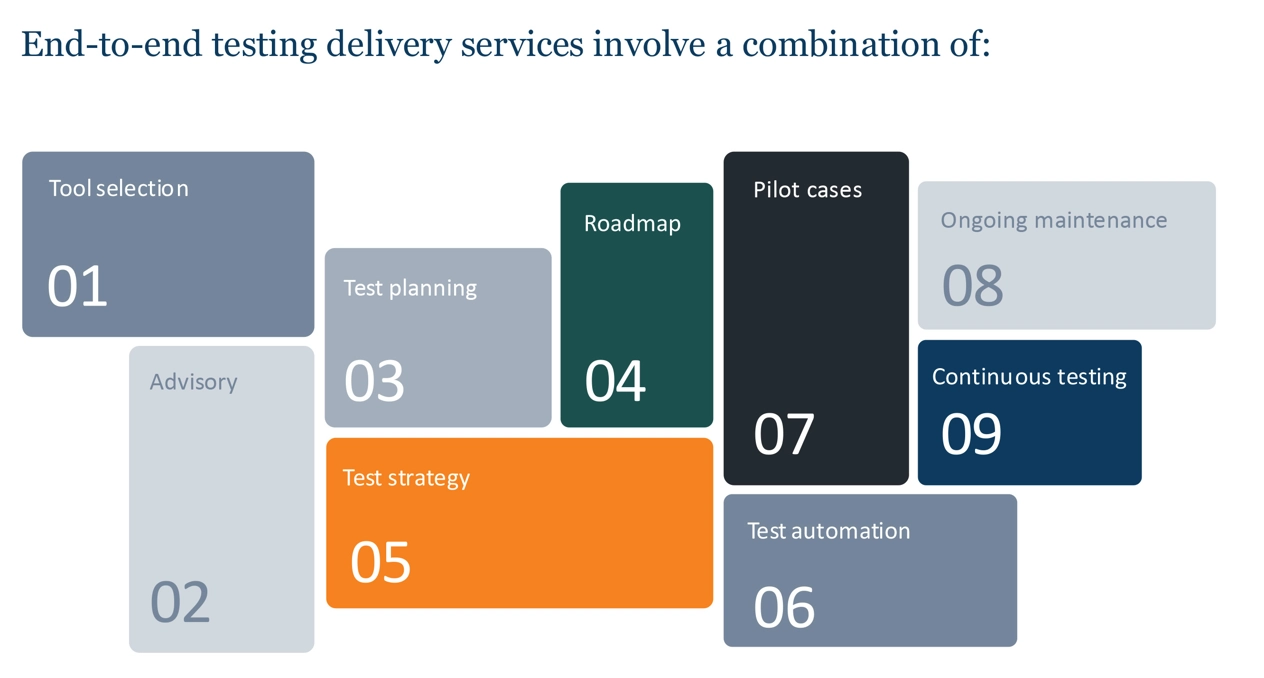In highly regulated industries like MedTech, maintaining compliance, system reliability and operational efficiency is non-negotiable. The short answer is automated testing, the long answer is adding expertise into the equation. The investment pays off quickly, though!
As the industry shifts to cloud-based systems, MedTech companies benefit from reduced paper-based processes, increased efficiency, and centralised data management. However, this digital transformation also brings new challenges – particularly around compliance validation.
Cloud systems receive frequent software updates, requiring continuous validation to maintain compliance with regulatory standards like FDA, EU MDR, and GxP guidelines. Trying to manage this manually can be time-consuming, costly, and prone to human error.
The best way to keep pace with changing market demands is with automated testing. It provides a faster, more reliable, and cost-effective way to maintaining compliance, optimising application performance, and enabling better integrations – reducing risk while keeping systems audit-ready.
Alongside this, combining automated testing with the technical expertise of a partner helps MedTech businesses navigate regulatory complexities, implement best practices, and continuously improve system efficiency.
To shed light on these complex processes we engaged Mikael von Porat, Senior Business Consultant at Columbus, and Kevin Bull, Product Strategy Director at Columbus, to discuss the software compliance validation challenges facing MedTech companies today, and how automated testing can help solve them.
Maintaining compliance validation in the cloud
With the high level of risk in the MedTech industry, software development and testing must meet strict regulatory requirements. In a cloud-based environment, software receives regular updates, typically quarterly or biannually, depending on the supplier.
“Every time this happens, businesses must revalidate the system and document that all processes still function correctly,” says Mikael von Porat, Senior Business Consultant at Columbus. “The challenge is managing these updates while staying compliant.”
In the past, on-premise software made validation simpler – companies could validate upon installation and lock down configurations. But in a cloud environment, regular patches and releases require ongoing validation. “Compliance validation becomes even more critical with cloud software,” says Mikael. “Providers need certifications, follow standards like GAMP 5, and deliver evidence that all updates are tested and validated so customers can trust the system.”
Kevin Bull, Product Strategy Director at Columbus, adds: “Validation is key for customers in risk-averse sectors. They need assurance that software updates are handled in a way that aligns with their industry’s requirements.”
Mikeal and Kevin highlight how many businesses still run these tests manually, which require dedicated people to run test cases step by step, document results, and verify system performance after every update. This not only takes significant time but also increases the risk of human error, inconsistencies, and missed defects – especially when dealing with complex, interconnected systems.
“With automated testing, we remove that manual workload. Instead of manually running these tests every time, customers can set up automated tests and, after each release, simply push a button to execute the entire validation process," Mikael explains.
"The system will test all processes, integrations, and configurations, then generate a report showing whether everything ran smoothly or if there were any failures. It significantly reduces errors and allows you to validate updates quickly, which is critical for FDA or European compliance standards."

Automated testing is more affordable than you think
Mikael points out that many businesses assume that automated testing is too expensive to implement. While there’s an initial investment, the long-term cost savings and efficiency gains far outweigh manual testing due to the ongoing time and resources required.
“Initially, there’s work involved in configuring the test automation tools, but it pays off quickly,” explains Mikael. “And the real benefit comes the second- and third-time testing is needed – when manual testing would take time and resources, automated testing just runs at the push of a button.”
Mikael adds that the more updates and tests a company requires, the higher the return on investment (ROI). With frequent cloud-based software updates, companies that rely on manual testing spend significantly more time and resources on validation.
“That’s why interest in automated testing is growing,” he says. “As testing tools improve, setup is becoming even easier. Automated testing is now more accessible than ever, offering businesses an affordable way to validate systems while maintaining compliance. It’s an enabler for regulated industries like MedTech to move to the cloud with confidence.”
Mikael and Kevin highlight additional reasons why automated testing is becoming a must-have for companies in highly regulated industries like MedTech:
- Stay ahead of changing regulations – with updates to FDA, EU MDR, and other industry regulations happening regularly, automated testing makes it easier to stay compliant without disrupting operations every time a new rule is introduced.
- Improved traceability and audit readiness – automated testing keeps a digital log of every test, making it easier to prove compliance during inspections and audits.
- Scalability for future growth – whether MedTech companies are expanding into new markets, launching new products, or integrating third-party tools, automated testing makes sure that operations stay compliant and functional as they scale.
- Consistent compliance across multiple locations – for MedTech companies operating globally, regulations can differ by region. Automated testing helps maintain a standardised approach to validation, so compliance stays consistent across all business locations.
- Less dependence on specialised testing teams – finding experienced compliance and IT professionals can be tricky. Automated testing removes the burden from internal teams, allowing businesses to focus on innovation and operations instead of spending time on manual validation.
Test automation done right
When it comes to automated testing, there’s a lot to consider. From choosing the right testing tools to making sure the integrations work correctly with existing systems, MedTech businesses must think about compliance, scalability, and long-term efficiency.
An experienced partner can provide industry expertise and proven methodologies, helping you follow best practices, implement automated testing effectively, and select the right automation tools. With access to market-leading technology and experienced test automation specialists, you can make sure that automated testing is efficient, reliable, and tailored for your business needs.
“We offer automated testing as an in-house service with experienced personnel, allowing us to help you throughout your project and beyond so you can make a seamless and compliant transition to the cloud,” says Mikael. “Our approach is flexible and scalable, so you can implement automated testing in a way that fits your needs and budget.”
Beyond implementation, working with a partner that provides long-term support is the best way to make sure automated testing continues to deliver value as your business grows. “If you’ve implemented automated testing and are compliant, saving time, and happy with the setup, ongoing support can help you maintain efficiency," explains Mikael.
"Some businesses prefer to manage everything in-house, while others want continued support to confirm that operations are running smoothly. If the system is already configured, we can trigger testing at the push of a button, confirming that everything is working as expected. This allows you to focus on core operations rather than application management.”
Mikeal adds that automated testing goes beyond just validating your current system – it also applies to new technologies, integrations, and upgrades. “For example, if a company switches from Infor M3 to Dynamics or the other way, automated testing can still support them in their new system. Even if they stay with M3 but integrate a new tool, automated testing confirms everything continues to work seamlessly. This applies to any digital expansion, not just ERP. From the customers I’ve spoken to, they’re especially excited about the benefits of integration testing, as it makes sure all systems remain fully connected.”
At Columbus, our test automation services are designed to reduce testing time, cost, and risk while accelerating software updates and ensuring system reliability. Through end-to-end testing frameworks, we help you achieve faster releases, improved defect detection, and smooth health checks post-production. Our automated regression tests can further reduce the risk of new deployments, giving you a competitive advantage.
